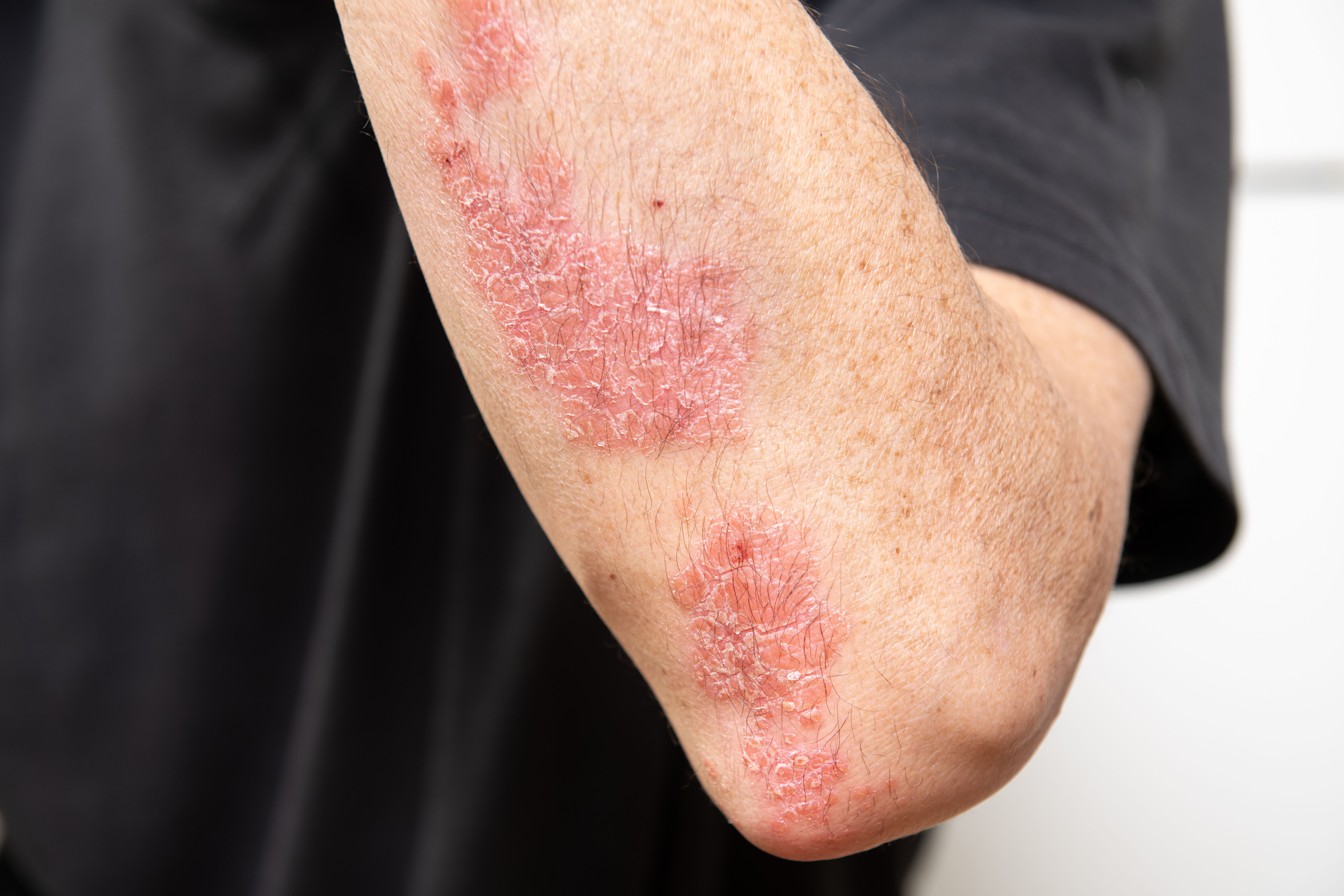- Case-Based Roundtable
- General Dermatology
- Eczema
- Chronic Hand Eczema
- Alopecia
- Aesthetics
- Vitiligo
- COVID-19
- Actinic Keratosis
- Precision Medicine and Biologics
- Rare Disease
- Wound Care
- Rosacea
- Psoriasis
- Psoriatic Arthritis
- Atopic Dermatitis
- Melasma
- NP and PA
- Skin Cancer
- Hidradenitis Suppurativa
- Drug Watch
- Pigmentary Disorders
- Acne
- Pediatric Dermatology
- Practice Management
- Prurigo Nodularis
- Buy-and-Bill
News
Article
From Psoriasis to PsA: Study Identifies Predictive Factors for Development
Author(s):
Findings reveal an increased risk of psoriatic arthritis among female patients with severe skin psoriasis who have nail involvement and require oral systemic therapy for their condition.
pimentos/AdobeStock

A recent study published in the Journal of International Medical Research found an increased risk of psoriatic arthritis (PsA) among female patients with severe skin psoriasis who have nail involvement and require oral systemic therapy for their condition.
The chronic inflammatory skin condition affects millions of individuals worldwide. For some individuals, psoriasis can progress to involve the joints, leading to PsA. This investigation sought to determine the predictive factors involved with PsA by examining the clinical characteristics of patients with psoriasis.
A total of 330 patients with psoriasis (with or without PsA) were included in the retrospective cohort analysis. The mean age of the cohort was 53 years, with a slight majority of male patients (54.5%). The racial and ethnic distribution revealed that the majority of patients were Malay (43.3%), followed by Chinese (33.3%) and Indian (21.8%). Most patients had attained a secondary school level of education or higher, indicating a diverse socioeconomic background within the cohort. The mean duration of follow-up for all patients was approximately 10.2 years.
The researchers categorized psoriasis treatment as topical agents, phototherapy, oral therapy, and biologics. Logistic regression analyses were employed to determine predictive factors of PsA development.
Clinical assessments revealed various aspects of psoriasis severity and associated comorbidities within the cohort. Among the significant findings (P < .001), predictive factors of PsA included female sex (OR, 3.33; 95% CI, 1.78-6.22), nail involvement (OR, 5.36; 95% CI, 2.50-11.51), severe skin psoriasis (OR, 27.41; 95% CI, 7.58-99.11), and prior oral systemic therapy use (OR, 4.09; 95% CI, 2.04-8.22).
During the study period, 25% of the patients were subsequently diagnosed with PsA with an incidence of 2.52 per 100 patient-years (95% CI, 2.04-3.14). The mean age at PsA diagnosis was 54.2 years, with a notable proportion of female patients (60.2%). The duration between the diagnosis of psoriasis and PsA onset varied, emphasizing the importance of ongoing surveillance in psoriasis patients, the study noted. Race and ethnicity did not significantly influence the likelihood of developing PsA, suggesting a universal risk across different demographic groups.
Nail involvement was observed in 59% of patients with PsA. The severity of skin involvement, assessed by body surface area (BSA), ranged from mild (68.3%), to moderate (25.4%) to severe (6.3%). Comorbidities such as hypertension, diabetes mellitus, and dyslipidemia were prevalent among the cohort, although the comparison of comorbidities between patients with PsA and those with psoriasis only revealed no significant differences.
In the univariate analysis, several potential risk factors for PsA development emerged, including female sex, nail involvement, use of topical treatment, prior use of oral systemic therapy for psoriasis, education level, marital status, presence of comorbidities, BMI, and the area of psoriasis. Further multivariate regression analysis, adjusting for key variables such as sex, education, marital status, diabetes mellitus, nail involvement, affected body area, topical therapy, and oral systemic therapy use, confirmed that female sex, nail involvement, severe skin psoriasis, and prior oral systemic therapy use were significant predictive factors for the development of PsA.
The study acknowledged limitations such as its single-center, retrospective design reliant on electronic medical records, potentially limiting generalizability and data accuracy. Additionally, the study's duration may not capture all cases of PsA development, and the inability to account for factors like medication adherence introduces potential confounding variables. Regardless, these findings support a benefit from increased screening, which can lead to earlier diagnosis and treatment, the researchers concluded.
Reference
Loo WY, Tee YC, Han WH, et al. Predictive factors of psoriatic arthritis in a diverse population with psoriasis. J Int Med Res. 2024;52(1):3000605231221014. doi:10.1177/03000605231221014
[This article was originally published by our sister brand, AJMC.]





